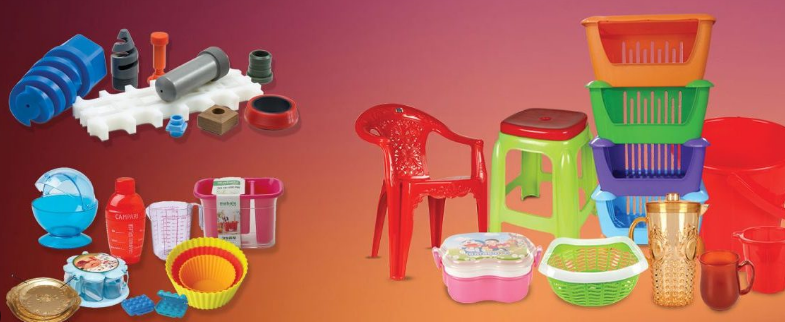Plastic products are made by injection molding through a process that involves melting plastic resin and injecting it into a mold to create the desired shape, which is then cooled and ejected.
Overview of Injection Molding
History and Evolution of Injection Molding
Injection molding traces its origins to the late 19th century with John Wesley Hyatt’s invention. Initially, it served simple applications like billiard ball production. The technology saw significant advancements during the 1940s, driven by World War II’s demand for mass-produced plastic items. Modern injection molding has evolved into a sophisticated process, utilized in various industries from automotive to consumer electronics.

Basic Concept and Mechanics of Injection Molding
Injection molding involves melting plastic pellets and injecting the molten material into a mold under high pressure. Key stages include:
Melting: The process begins with heating plastic pellets to a specific temperature, usually 400°F to 500°F, which ensures optimal flow into the mold.
Injection: The molten plastic is then injected into the mold cavity. Injection pressures vary, but typically they range from 10,000 to 30,000 psi.
Cooling and Solidification: In the mold, the plastic cools and takes the mold’s shape. Cooling times depend on the part’s size and complexity.
Ejection: The final step involves ejecting the cooled, solidified part from the mold. Ejection times are crucial for maintaining production efficiency.
Modern electric injection molding machines are more energy-efficient compared to traditional hydraulic models, consuming up to 60% less energy. This efficiency significantly reduces production costs, making injection molding a preferred method for mass production.
For additional details, the Wikipedia page on Injection Molding offers extensive information.
Materials Used in Injection Molding
Types of Plastics for Injection Molding
In injection molding, manufacturers choose from a range of plastics, each serving specific purposes. Notable types include:
Polyethylene (PE): This common plastic, priced around $1.50 to $2 per pound, suits consumer goods and packaging due to its flexibility and strength.
Polypropylene (PP): With its chemical resistance, PP, costing between $0.70 and $1.50 per pound, finds widespread use in automotive parts and medical devices.
Polystyrene (PS): PS, light and easy to mold, and costing about $1.00 to $1.20 per pound, is ideal for products like disposable cutlery and CD cases.
Acrylonitrile Butadiene Styrene (ABS): ABS, in the range of $1.50 to $2.50 per pound, is the go-to material for items needing high impact resistance, such as protective gear and electronic housings.
Material Properties and Selection Criteria
The selection of the right material hinges on multiple factors. Essential considerations are:
Mechanical Strength: ABS and Polycarbonate, known for their toughness, are top choices for products that must withstand stress.
Thermal Properties: PEEK, though costly at over $100 per pound, is ideal for high-temperature applications due to its excellent heat resistance.
Chemical Resistance: For resistance to chemicals, PP and PVC stand out, making them fit for diverse industrial uses.
Cost-Effectiveness: Budget-friendly materials like PE and PP strike a balance between cost and performance.
Regulatory Compliance: Materials for medical or food-related products must adhere to specific FDA standards.
For further details, the Wikipedia page on Plastics offers comprehensive information.
Injection Molding Machine and Equipment
Components of an Injection Molding Machine
Essential Parts and Their Functions:
Hopper: Where manufacturers load the plastic pellets. It typically features a drying system to prevent moisture issues in the plastic.
Heating Barrel: This component heats and melts the plastic pellets. It often consumes significant power, typically ranging from 15 kW to 40 kW, depending on the machine’s size.
Screw Mechanism: The screw both mixes the molten plastic and injects it into the mold. Its design is crucial for efficient melting and injection.
Mold Cavity: Precision-engineered to form the desired part. Mold lifespan can vary, with steel molds lasting up to a million cycles.
Clamping Unit: Holds the mold in place during injection. Clamping force can range from 5 tons to over 6,000 tons, depending on the machine’s size and the part being produced.
Types and Selection of Molding Machines
Choosing the Right Machine:

Hydraulic Machines: Known for their high clamping force, these are ideal for large, complex parts. However, they consume more energy, affecting operational costs.
Electric Machines: Offer precision and energy efficiency, using up to 60% less energy than hydraulic machines. They excel in producing smaller, detailed parts.
Hybrid Machines: Combine the advantages of both hydraulic and electric types, offering a balance of power and energy efficiency.
Selection Criteria include:
Part Size and Complexity: Determines the required clamping force and platen size.
Material Used: Different materials require different barrel temperatures and injection pressures.
Production Volume: High-volume production benefits from machines with faster cycle times and higher efficiency.
For additional insights, explore the Wikipedia page on Injection Molding Machines.
Mold Design and Manufacturing
Principles of Mold Design
| Design Aspect | Details |
|---|---|
| Wall Thickness | Uniform thickness (0.04-0.16 inches) ensures even cooling and reduces defects. |
| Draft Angles | Angles of 1-2 degrees allow easy ejection of the part from the mold. |
| Gates and Runners | Efficiently designed gates and runners ensure optimal flow of the plastic into the mold. |
| Cooling System | Proper cooling channels are crucial for reducing cycle times and preventing defects. |
| Ejection System | Must be designed to efficiently remove the part without causing damage. |
Manufacturing Process of Molds
| Step | Process Details |
|---|---|
| Design and Planning | Molds are designed using CAD software, focusing on precision and material flow. |
| Material Selection | Common materials include steel and aluminum. Steel is more expensive but offers longer life (up to 1 million cycles). Aluminum is cheaper but less durable. |
| Machining | CNC machining, EDM, and surface grinding are used to create the mold. |
| Assembly | The mold components are assembled and tested for accuracy and functionality. |
| Testing | Prototype testing ensures the mold meets the required specifications and produces parts with the desired quality. |
Cost Considerations:
Design Complexity: More intricate molds require more time and resources, increasing costs.
Material Selection: Steel molds are pricier but have a longer lifespan, whereas aluminum molds are more cost-effective for short runs.
Size of the Mold: Larger molds require more material and machining time, impacting the overall cost.
For more detailed information, visit the Wikipedia page on Mold Design.




